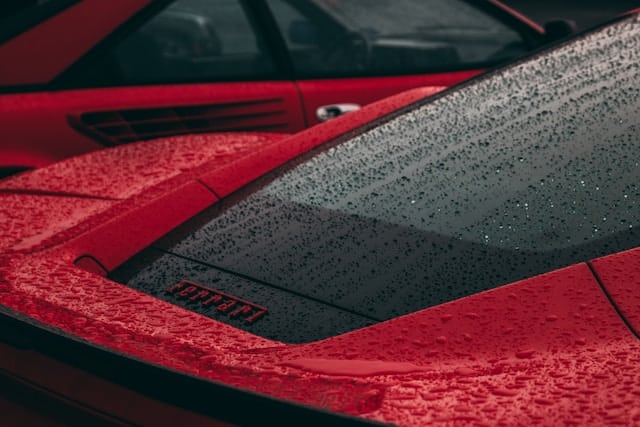How to Spot Water Damage Before It’s Too Late
 Water damage is a silent threat that can degrade your vehicle’s safety, performance, and value—long before visible problems arise. At Chaney’s Collision Centers, we know the earlier you spot water intrusion, the easier and cheaper it is to fix. Here’s how to catch the warning signs before water wreaks havoc on your car.
Water damage is a silent threat that can degrade your vehicle’s safety, performance, and value—long before visible problems arise. At Chaney’s Collision Centers, we know the earlier you spot water intrusion, the easier and cheaper it is to fix. Here’s how to catch the warning signs before water wreaks havoc on your car.
Why Water Damage Matters
Water that seeps into your vehicle can corrode vital components, short out electronics, breed mold, and even cause engine failure. Minor leaks from storms, floods, or even car washes can build up over time into major, costly repairs if unnoticed.
The Top Signs of Water Damage
1. Odd or Musty Smells
A musty, damp, or moldy smell is often the first indicator of water intrusion. Even after cleaning or using air fresheners, persistent odors point to lingering moisture or hidden mold in the vehicle’s interior or ventilation system.
2. Dampness and Stains
- Check carpets and upholstery: Feel for moisture, especially in footwells, trunk, and under floor mats. Water lines, staining, or fading can hint at previous flooding.
- Inspect seat belts: Pull them out fully to check for water stains or mildew along the straps.
3. Electrical Glitches
- Dashboard warning lights: Appear unexpectedly or remain lit after startup, indicating possible electrical shorts.
- Malfunctioning systems: Flickering headlights, unresponsive buttons, erratic infotainment controls, or wonky air conditioning can result from damp or corroded connections.
- Fogged headlights/taillights: Condensation inside light housings is a major red flag the car has been exposed to excess water.
4. Unusual Rust or Corrosion
- Examine for rust in spots you wouldn’t expect for the car’s age—around screws, door hinges, under the dashboard, or inside the trunk and engine bay.
- Small bubbles under the paint may indicate rust beneath the surface, sometimes triggered by water exposure.
5. Debris in Odd Places
Floodwater often leaves fine dirt, sand, or vegetation in hidden crevices:
- Look between seats, inside the glove box, under carpets, and inside the trunk for sand or silt that shouldn’t be there.
6. Moisture in Fluids
Inspect the oil, brake fluid, and transmission fluid:
- Milky or discolored fluid signals water contamination—a sure sign that the car has taken on water and needs immediate attention before engine damage occurs.
7. Interior Anomalies
- Brand new carpets or mismatched upholstery in a used car may be a cover-up for previous flood damage.
- Pull back carpets or trim in various areas to look for moisture or signs of mold.
What To Do If You Suspect Water Damage
- Test all electronics: Every button, light, and sensor. Inconsistent behavior may indicate moisture in wiring.
- Take a drive: Listen for new noises or steering/breaking issues, and check for odd smells coming from vents.
- Get a professional checkup: Technicians at Chaney’s Collision Centers use advanced tools to identify hidden water damage and prevent deeper issues from developing.
Prevention is Key
Whenever possible, avoid driving through deep water, park in covered areas, and have leaks sealed immediately. At the first sign of dampness, act fast—mold and corrosion can set in within days.
Trust the Experts
Water damage is tough to spot and even tougher to repair if left unchecked. If you notice any of these warning signs, bring your car to Chaney’s Collision Centers for a thorough inspection and professional advice. Spotting damage early could save you thousands—and keep your vehicle safe and sound on the road.

